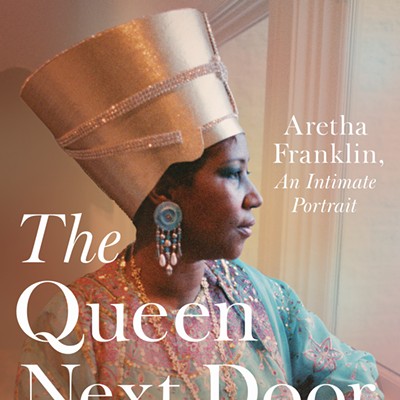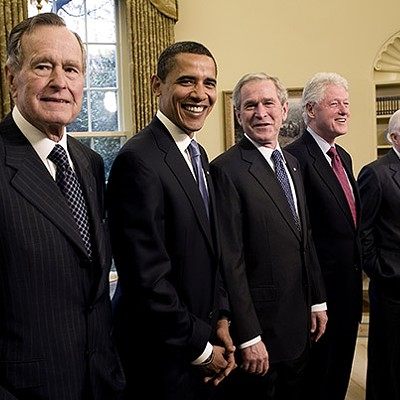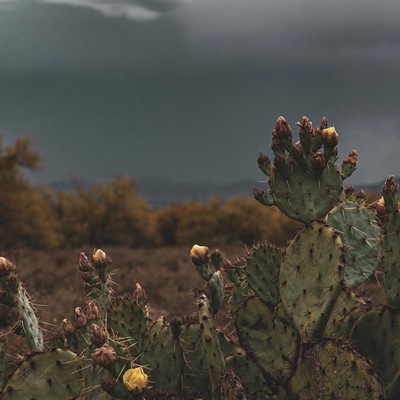When he was visiting friends in Tucson, Etherton saw a space for rent at 424 E. Sixth Street and he impulsively rented it. He'd always enjoyed visiting the Center for Creative Photography, which at the time was located in a former bank building on University Boulevard. Even then, the Center housed a nationally known photographic collection, and its tiny gallery was a hub for famous photographers. Etherton knew there was no commercial photography gallery in Arizona, and he felt that with photography programs at the University of Arizona and Arizona State University, Tucson would be a good place to start a commercial gallery.
In retrospect, Etherton realizes that he was naïve about what running a gallery would mean. "I kind of thought that if you had a nice, bright, white space, and you matted and framed things properly, and you had a decent mailing list that everything would kind of take care of itself, that things would just sort of fly off the wall ... . Very quickly I learned that I couldn't wait for people to come through the door."
The first few years after he opened the gallery, Etherton would close during the summer, load up his car with photographic prints and hit the road with a calendar, a roadmap, the George Eastman House Index to American Photographic Collections and a major-league baseball schedule in hand. He drove cross-country selling photographs to museums and meeting gallery owners during the day and watching baseball games at night.
Etherton says that the dealer's commission he made on the $150-$200 photographs he sold hardly made it worthwhile financially, but the contacts he made laid the groundwork for his business. And he still goes to baseball games with some of the photography friends he made while traveling.
In 1989, the Etherton Gallery moved from its small storefront space to its current location at 135 S. Sixth Avenue. Suddenly, Etherton's one-person do-it-all business had stepped up to a New York loft-style walk-up with wood floors. The open space is large enough to accommodate one small exhibition, plus a large, two-person exhibition. By the mid-1980s, Etherton had begun showing painting and sculpture, mostly local, as well as local and national photography.
Etherton began managing the Temple Gallery in 1990 as an exhibition venue to feature local artists in the Temple of Music and Art at 330 S. Scott Ave. Between the two galleries he has shown more than 200 artists in 20 years, plus a myriad of group exhibitions. The current exhibit at the Etherton Gallery gathers more than 50 of those artists. The show serves as a retrospective for the gallery's longtime viewers.
Everything in the way of traditional early 20th-century, modern and contemporary photography is represented: landscapes, nudes, portraiture, documentary images and abstractions. Mark Klett's photograph is about as conceptual as it gets, but the imagery runs the gamut from a colorful autumn scene of leaves changing in the forest by Christopher Burkett to a disconcerting nude by Joel Peter Witkin, who is famous for using parts of human cadavers in his photographs.
When people ask Etherton how he can show works as antithetical as Burkett and Witkin, he says, "I don't think just because a piece of artwork can function in a decorative way and is really beautiful, that it's not valid or that it doesn't have something to say. On the other hand, I don't think that everything has to be shocking or issue-oriented or cutting-edge. I think there's a whole range of different ways for artists to express themselves, and we've tried to explore that range."
The exhibition also features wonderful, classic photographs that appear in every textbook of modern photography. Harry Callahan's nude of his wife Eleanor transforms her into a small woman overwhelmed by a large, bright dormer window. Edward Weston's nude of Charis Wilson captures her enclosing herself, head down, arm wrapped around her leg pulled up to her chest. It's wonderful to see some of the more recent classics, too: photographs from Danny Lyon's biker series, Richard Misrach's toned desert series and Linda Connor's India series.
Some artists made new works for this exhibition. Regular gallery visitors may recognize a few photographs that have been recently exhibited at the gallery. Other artists represented in the exhibition include David Andres, Marilyn Bridges, Bailey Doogan, Judith Golden, Luis Jimenez, Mayme Kratz, Cynthia Miller, Frances Murray, Timothy O'Sullivan, Alfred Quiroz, Eriks Rudans, Herb Stratford, Jim Waid and Todd Walker.
For a number of artists Etherton's support and representation has bolstered their career. New Mexico artist Holly Roberts had recently completed her master's degree at Arizona State University when she stopped in at the Etherton Gallery bearing a stack of her painted photographs wrapped in cellophane. Her first exhibition at the Etherton was in 1983, and she has had regular exhibitions there ever since. Her résumé is now packed with national and New York exhibitions, and a second book about her work has just been published.
Almost from its inception, the Etherton Gallery has been at the core of Tucson's visual arts community and gallery scene, but Etherton says he's still not waiting for people to walk in the door. To reach a new audience Etherton opened a second gallery a year ago in Joesler Village at Campbell Avenue and River Road. Because he needed to move his downtown storage location last year, Etherton turned the front part of his new storage space at 188 E. Congress Street into the Etherton Gallery Annex, a small exhibition space that gives the larger gallery some more visibility. For someone with a background in art rather than business, Etherton now has six employees and four gallery spaces to run.
As for what he'll be doing three years from now after his son graduates from high school, Etherton can't say because he doesn't know. He turned 50 this year, and though he'll always be involved with photography, Etherton can't imagine running an art gallery in Tucson when he's 60.
Don't expect to see the Etherton Gallery just shut its doors without notice, because Etherton says he'd never do that. But if there's an interested buyer around in the next three to five years, the Etherton Gallery may be on the market. On the other hand, Etherton says, "I can't think that far ahead. I've never planned that far ahead about anything, ever."










